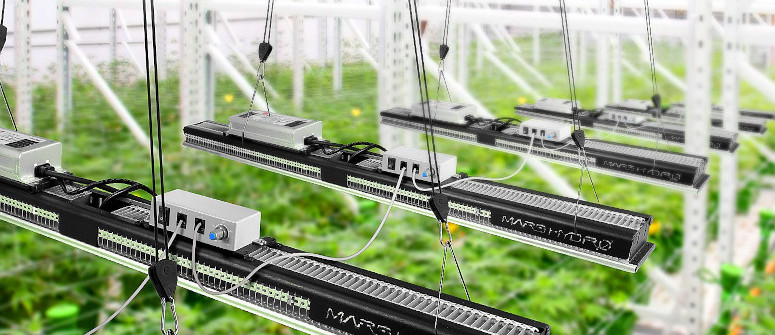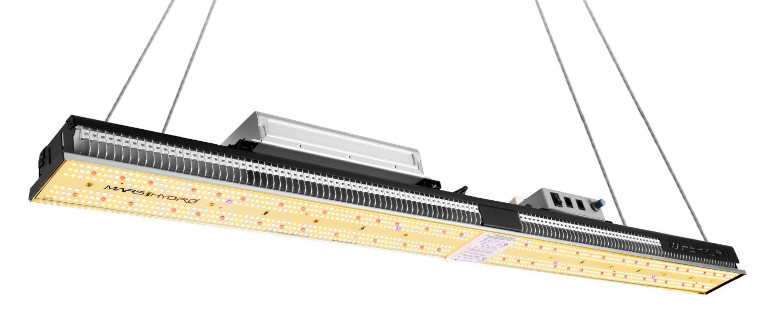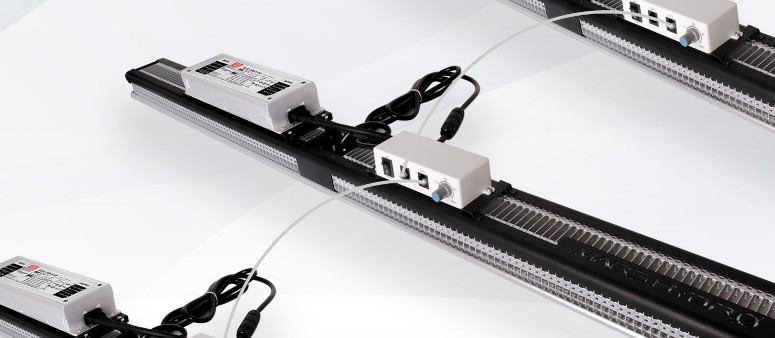Mars Hydro SP3000 grow light review

The SP3000 is a top-shelf version of the much-loved SP250. The powerful light keeps temperatures down with a removable driver, and features a dimmer switch that allows for different light intensities throughout the growing cycle. We take a look at its features and set up in our detailed review.
Contents:
Mars Hydro has made a name for itself in the cannabis world. They’re known for their high-quality, yet affordable LED grow lights, speedy shipping, and great customer service, with both a presence in the EU and the US. Recently, the company has added a new model to its SP range, the SP3000. Whether you’re looking for a new grow light or are just curious about this new development, check out everything you need to know about the product in our review below.
WHAT IS THE MARS HYDRO SP3000?
As the successor of the popular Mars Hydro SP250, the SP3000 offers an array of new and improved functions that make it a reliable, effective, and long-lasting tool for any indoor grower. Among other impressive traits, the fanless grow light features full-spectrum LEDs, a waterproof body, and the potential to boost yields by a massive 50%.
TECHNICAL SPECS
Before we explore aspects of the Mars Hydro SP3000 in detail, check out the key technical specifications below:
- Power draw: 300W±5%
- Input voltage: AC100-277V
- LED brand: Samsung LM301B; OSRAM 660nm
- Spectrum: 380–410nm, 650–660nm, 730–740nm, 2800–3200K, and 4800–5000K
- Flower coverage: 2 × 5’ (69 × 150cm)
- PPE: 2.74–2.82 Umol/j
- Certificates: ETL, CE, DLC
- Gross weight: 6.31kg/13.19lbs
- HID replacement: 450W HPS/MH
- Diode quantity: 952PCS
- LED driver: 1PCS Meanwell driver
- Veg coverage: 4 × 5’ (120 × 150cm)
- Lifespan: 50000H
- Waterproof rating: IP65
- Net weight: 4.62kg/10.2lbs
MARS HYDRO SP3000 MAIN FEATURES
Mars Hydro’s mastermind designers created the SP3000 as a top-shelf LED option, incorporating various features to elevate the device to a superior level. The full-spectrum grow light covers all necessary wavelengths, mimicking natural light from the sun, and features removable drivers to reduce heat output.
Continue reading to check out a full breakdown of the SP3000’s unique features.

FULL-SPECTRUM LIGHT
The Mars Hydro SP3000 boasts a perfect full spectrum that closely mimics natural sunlight. Cannabis evolved over millions of years under the rays of the sun. As a result, plants exposed to full sunlight throughout the growing season emerge as luscious, productive specimens. The SP3000 harnesses similar wavelengths with its Samsung and OSRAM LEDs, with particular intensity at 315–400nm (UVA), 430–480nm (blue), 630–680nm (red) and 800–1000nm (IR).
The emphasis on these spectrums helps give cannabis well-rounded support throughout its entire cycle. Blue wavelengths help cannabis plants germinate, and also drastically increases growth and vigour during the vegetative phase of the growing cycle. IR light has been shown to help boost and support photosynthesis when used in combination with other light wavelengths, helping ensure plants produce the energy they need. Lastly, Red and UVA light comes in handy during the flowering stage, where they help to improve flower production and thus yields when combined with blue light.
DIMMABLE CONTROLS
The SP3000 features a rotating dimmer switch with a wide range of settings, spanning from 10–100% brightness. Such a high level of control enables growers to alter the intensity of the light depending on the current growth stage.
When hanging the light 12–18 inches (30–45cm) above the canopy, Mars Hydro recommends the following brightness settings:
- Clone stage: 30%
- Germination stage: 30%
- Seedling stage: 50–75%
- Vegetative stage: 75–100%
- Flowering stage: 100%
We found this to offer a great deal of versatility and is one of the main draws for may growers—allowing lighting to be tailored to the growth phase without having to change lights or worry about stress/bleaching that LEDs can sometimes cause.
REMOVABLE DRIVERS
LED lights offer the huge advantages of lower running costs and less heat output. However, powerful LED lights such as the SP3000 still emit some heat. Luckily, the SP3000 features a removable driver. This self-contained power supply regulates the energy required to illuminate the LEDs, generating most of the device's heat.
Growers can unscrew the driver and place it outside of the growing tent while keeping it connected with the long extension cord. This allows cultivators to keep temperatures consistent within the growing space. It’s a major advantage, especially for those who have smaller grow tents where heat management can be tricky, and something that sets the SP3000 apart.
DAISY CHAIN FUNCTION

The daisy chain function makes the SP3000 a viable option for large-scale home grows and commercial operations. Growers can connect 20 lights together to form a daisy chain of devices that respond to a single dimmer switch. Each light still requires individual power, but having multiple dimmers all operate from control goes a long way to ensure consistency. This level of control saves a large amount of time when overseeing many plants at the same time. As we focus on home grows, it's not something we got the opportunity to put fully through its paces, but the option to upscale looks good on paper.
LIGHT COVERAGE
The Mars Hydro SP3000 casts its light at an adequate intensity over a 2 × 4ft (60 × 120cm) growing space during the seedling and vegetative phases. We tested with a single bar, and keen to see how it did around the edges and corners—where traditionally, such lights tend to be weak. To test it, we took PAR readings. The PAR output of light measures light emission within the photosynthetic range. The SP3000 produces a PAR of 741–999µmol, with the dead centre being 999 and some of the corners dipping down to the lowest point. The corners were the only parts that dipped below 800 µmol; when you consider most LED grow lights dip to the 500s in these areas, it is a testament to the build quality of the SP3000 and the components used. It is extremely impressive.
Autoflowering plants will happily spend the entire growing cycle in a tent of this size. However, we would suggest reducing the light footprint during the flowering stage to optimise bud development.
SETTING UP AND USING THE MARS HYDRO SP3000
We found setting up the SP3000 to be extremely easy. After removing all of the components from the packaging, hook the suspension cords onto the frame at the top of your growing tent. Once in position, you have the choice of screwing the driver into place on top of the light or placing it outside of the grow space.
Once connected, the dimmer switch also fits perfectly on top of the suspended light for easy access. The handy instruction manual contains detailed advice on different hanging heights, brightness settings, and information regarding the warranty.
Whilst trialling the light, we were extremely impressed by how silent it is. Instead of using a fan, the SP3000 features an aluminium heat sink that achieves optimal heat dissipation. Along with low running costs and low heat output, the lack of noise makes the SP3000 a true stealth light.
DOES THE MARS HYDRO SP3000 HAVE ROOM TO IMPROVE?
After playing around with the Mars Hydro SP3000, we found it hard to find any faults. We like to keep things unbiased here at CannaConnection, so we viewed the device through a neutral lens. The only thing we identified an issue with was the suspension hooks. Although minor, more substantial hooks would add a nice finishing touch to the SP3000.
IS THE MARS HYDRO SP3000 WORTH IT?
LED lights have come a long way, and the SP3000 demonstrates this perfectly. Mars Hydro made a huge jump from the SP250 all the way to the SP3000, but they didn’t get ahead of themselves. The new edition features an array of well-thought-out features that make it easy to use, beginner-friendly, and high-performing light intensity. Overall, we recommend the SP3000 to indoor growers looking to keep running costs down while supplying their plants with the perfect wavelengths for optimal growth.




